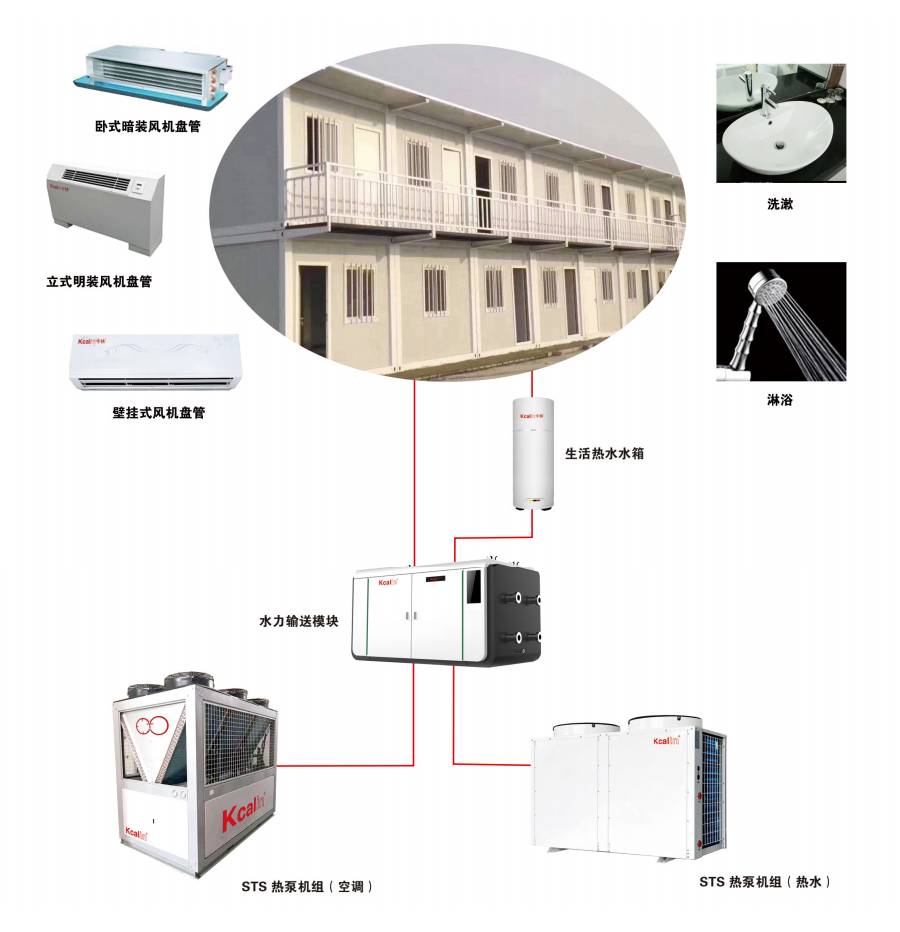With the continuous development of construction engineering, a comfortable and efficient indoor environment has become people's pursuit of architecture. As one of the key facilities in construction engineering, the working principle of the air conditioning and ventilation system directly affects the quality of the indoor environment.
The basic components of air conditioning and ventilation systems
Ventilation section:
Fresh air inlet: Fresh air is introduced through ventilation openings to ensure indoor air quality.
Exhaust vent: It releases excessive harmful substances such as carbon dioxide and moisture indoors, maintaining fresh indoor air.
Air conditioning section:
Cooler/evaporator: Through the circulation of refrigerant, indoor heat is absorbed and cooled air is sent into the room.
Heater: During cold seasons, the air is heated by electric heating or other methods to maintain indoor warmth.
Fan: The processed air is sent into the room through a fan to maintain air circulation.

Working principle analysis
Ventilation stage:
The operation of the ventilation system begins in the ventilation stage. Fresh air is introduced from the outside and is filtered to remove particulate matter from the air, ensuring that clean air enters the room. At the same time, the exhaust vents discharge the polluted indoor air, keeping the indoor air fresh.
Air conditioning stage:
During summer or high temperatures, the cooler starts working. The refrigerant absorbs the heat inside the room, cools the air, and sends it into the room through a fan to lower the room temperature. During winter or low temperatures, the heater starts. Heating the air through a heater ensures indoor warmth and comfort.
Control stage: Real time monitoring of indoor temperature through temperature sensors, automatic adjustment of cooling and heating systems, to maintain the set comfortable temperature. The humidity sensor monitors indoor humidity, and the system adjusts the humidity according to the set value to maintain an appropriate humidity level.
Key technologies for efficient and energy-saving
Variable air volume system: Adopting a variable air volume system, adjusting the air supply volume according to actual needs, reducing system operating power, and improving energy efficiency.
Heat recovery technology: Introducing a heat recovery device to recover and utilize the heat energy in the discharged air, preheating or pre cooling fresh air, and reducing energy consumption.
Intelligent control system: With the help of intelligent control system, precise regulation of air conditioning and ventilation system is achieved through algorithms and sensors, improving the intelligence level of system operation.
As a key element in creating a comfortable indoor environment, the in-depth understanding of the working principle and continuous technological innovation of the air conditioning and ventilation system in construction engineering are the driving forces for the development of the construction industry towards a more intelligent, energy-saving, and environmentally friendly direction. By continuously introducing good technology and improving the level of system intelligence, we can expect that in the future, air conditioning and ventilation systems in buildings will not only create a more livable environment for people, but also better achieve effective energy utilization and sustainable environmental development.







Comment